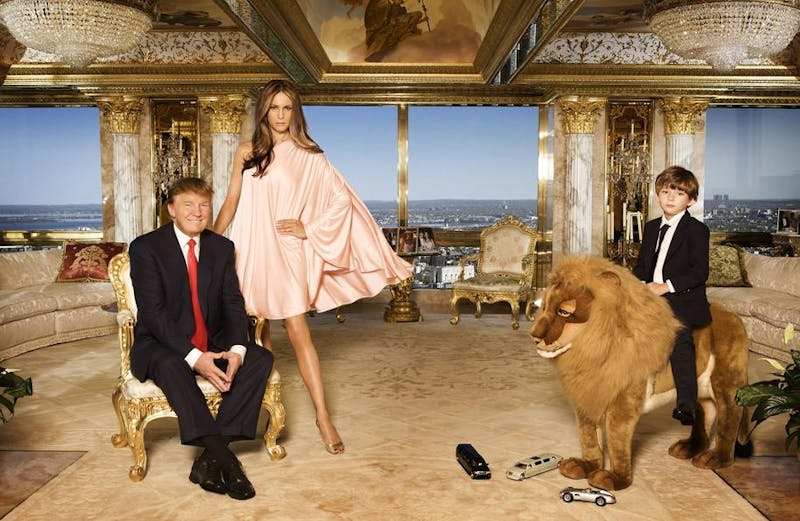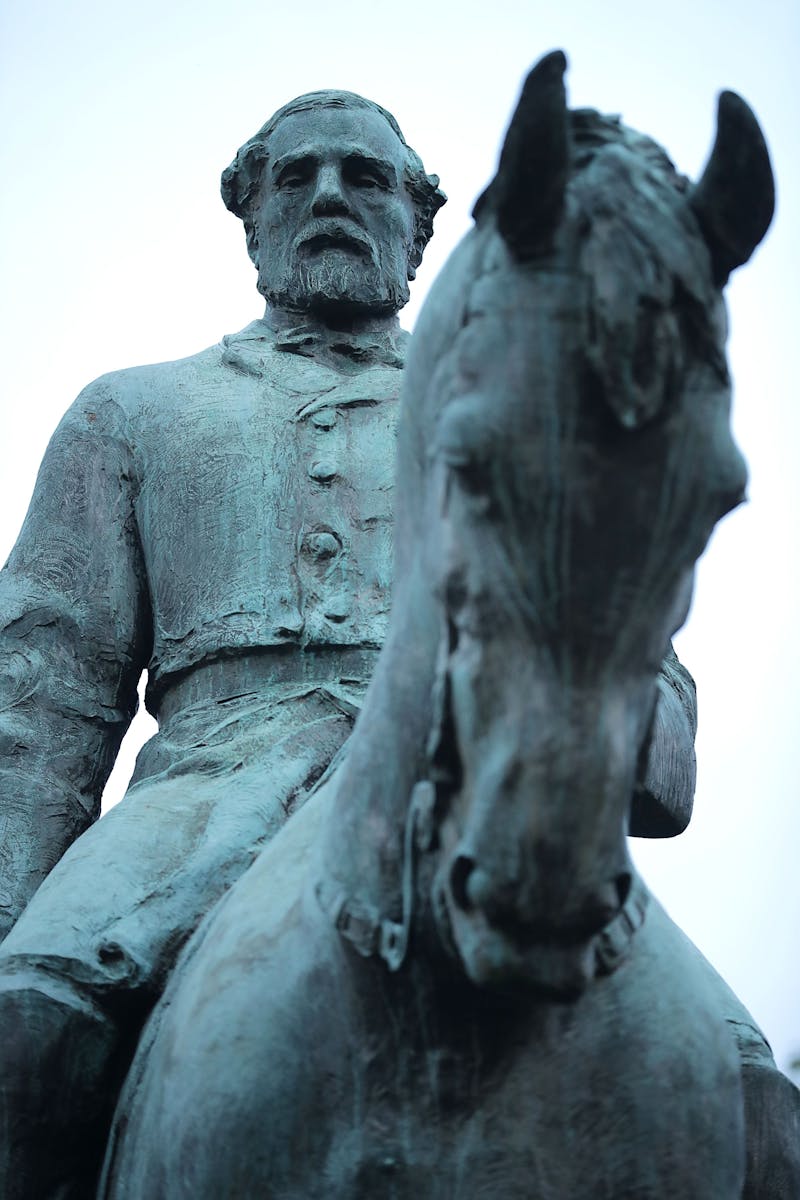Statues and monuments, Heather Heyer, the White House, the Rose Garden of the White House, President Emmanuel Macron’s welcome ceremony, the proposed Healthcare Bill, the community of Bedford, New Jersey, the forests and lakes of America, and the “picture” painted by his new healthcare policy: these are the things that Donald Trump has called “beautiful” in tweets since his inauguration. In speeches, he has also bestowed this epithet upon his proposed border wall and a piece of chocolate cake.
The occasion for the president’s most recent tweet about beauty is, of course, his defense of the various statues of Confederate leaders, which many people would like to pull down. They would like to pull those statues down because the Confederacy and the men who ran it have been celebrated over the last century and a half as part of a concerted and organized campaign to whitewash their traitorous tenure. As the mayor of New Orleans Mitch Landrieu put it, “the Confederacy was on the wrong side of history and humanity.”
Sad to see the history and culture of our great country being ripped apart with the removal of our beautiful statues and monuments. You.....
— Donald J. Trump (@realDonaldTrump) August 17, 2017
...can't change history, but you can learn from it. Robert E Lee, Stonewall Jackson - who's next, Washington, Jefferson? So foolish! Also...
— Donald J. Trump (@realDonaldTrump) August 17, 2017
But Trump wishes to keep the statues because he thinks they are beautiful. Americans might be forgiven for their surprise at Trump’s new interest in aesthetics. As the Times reported earlier this year, in the mid-1990s Trump once tossed his overcoat and some binders over a Donald Judd sculpture while on his way to show off a Warhol to their architecture critic. He was angry that the critic did not like Trump Tower, which is very ugly but very expensive.
Trump does have some strongly held convictions about the way that things should look, but they are very much out of step with “taste” as the other rich white people of the world define it. Trump seems to spend a lot of money making his hair look improbable, potentially enhancing it with a very unusual form of weave. Likewise, he is painted a strange color—that must happen on purpose, because he wants it to look that way. (As an RNC makeup artist put it, “I know exactly what he does to himself—the tanning bed, the spray tan, he wears the goggles and you can see the hyperpigmentation around his eyes”). He wears one hideous hat and ties that are much too long and pleated chinos.
Trump is not a man of taste. So, one interpretation open to us is that Trump does not care about the beauty or unbeauty of statues of Confederate leaders, but is merely pretending to think they are beautiful because he can’t think of anything else to say in defense of his Neo Nazi friends. But there are other available interpretations.

Think of the Trump family portrait, the liquid gold that threatens to choke each of its three subjects. The Daily Mail was extremely generous when it referred to “classical” details in this home—the columns, the statues that here are out of shot. The place was designed by Angelo Donghia, a man who all his life wore extraordinarily wide collars. This apartment looks like the fevered hallucination of a used car salesman who has tired of elegance.

Now, let’s look at the Charlottesville statue of Robert E. Lee and his horse, Traveller. The statue is the work of Henry Shady (1871-1922), who died before he could quite finish it off. The last bit was done by Leo Lentelli (1879-1961), an Italian immigrant. Shady himself learned sculpture by copying his own pets, along with animals in the zoo. He was quite good at doing horses, having dissected a few of them in the course of working on Washington, D. C.’s Ulysses S. Grant Memorial.
The horse, Traveller, is certainly rather better formed than Lee himself. The whole sculpture is bronze, and thus nicely encased in a greenish patina that really classes the thing up. But look at Lee’s face. It looks made of plasticine. He seems to be all eyebrow and no skin. This is not a beautiful piece of public art. It is the cobbled-together work of two different craftsmen—one on the brink of death and the other not even American—and it is ugly.
So, what if Trump truly and authentically believes that the loss of Lee’s image will sap America’s public spaces of their beauty? He would not be the first authoritarian leader with bad and tacky taste. Dictators of many stripes have loved kitsch, from Kim Jong-Il to Vladimir Putin to Saddam Hussein to Turkmenbashi. What if Trump does think that Lee is beautiful, but has an idea of beauty that is closer to Stalin’s than to the New York Times’?
In The Unbearable Lightness of Being, Milan Kundera wrote that kitsch inspired a kind of idiotic emotionality. “Kitsch causes two tears to flow in quick succession. The first tear says: How nice to see the children running in the grass! The second tear says: How nice to be moved, together with all mankind, by children running in the grass! It is the second tear which makes kitsch kitsch.” The second tear is also the political tear. In endorsing the hideousness of Shady and Lentelli’s sculpture, which is kitschy and sentimental in its depiction of a “noble” general bestride his very favorite horse, Trump invites us to come together as a nation. He wishes for the second tear to fall, and with it all our knowledge and skepticism about the power that put that ugly statue up in the first place. But who am I to tell Trump what to think? He’s the critic, now.
